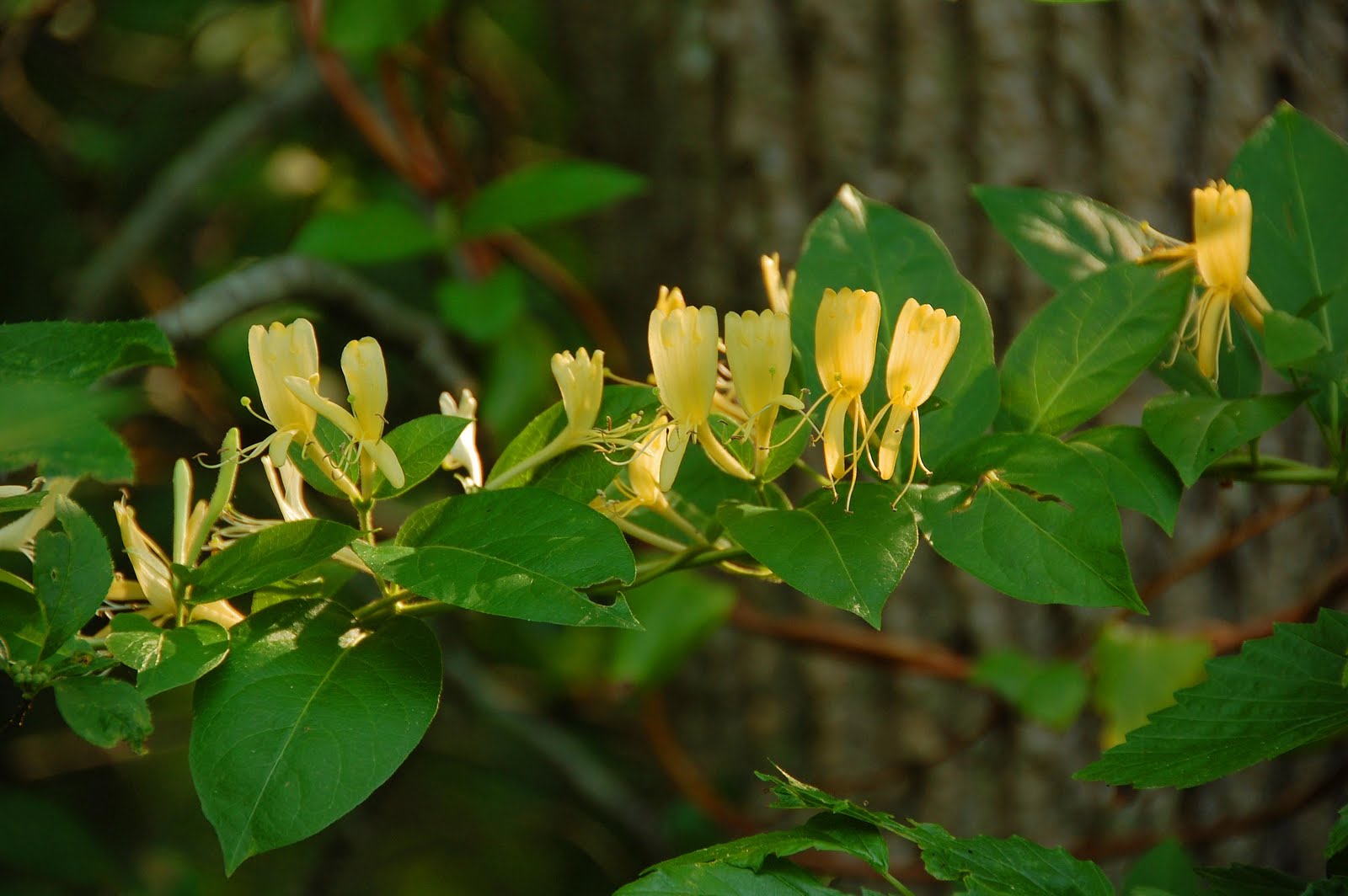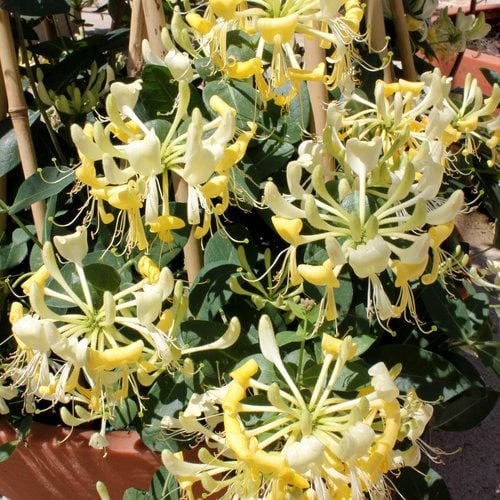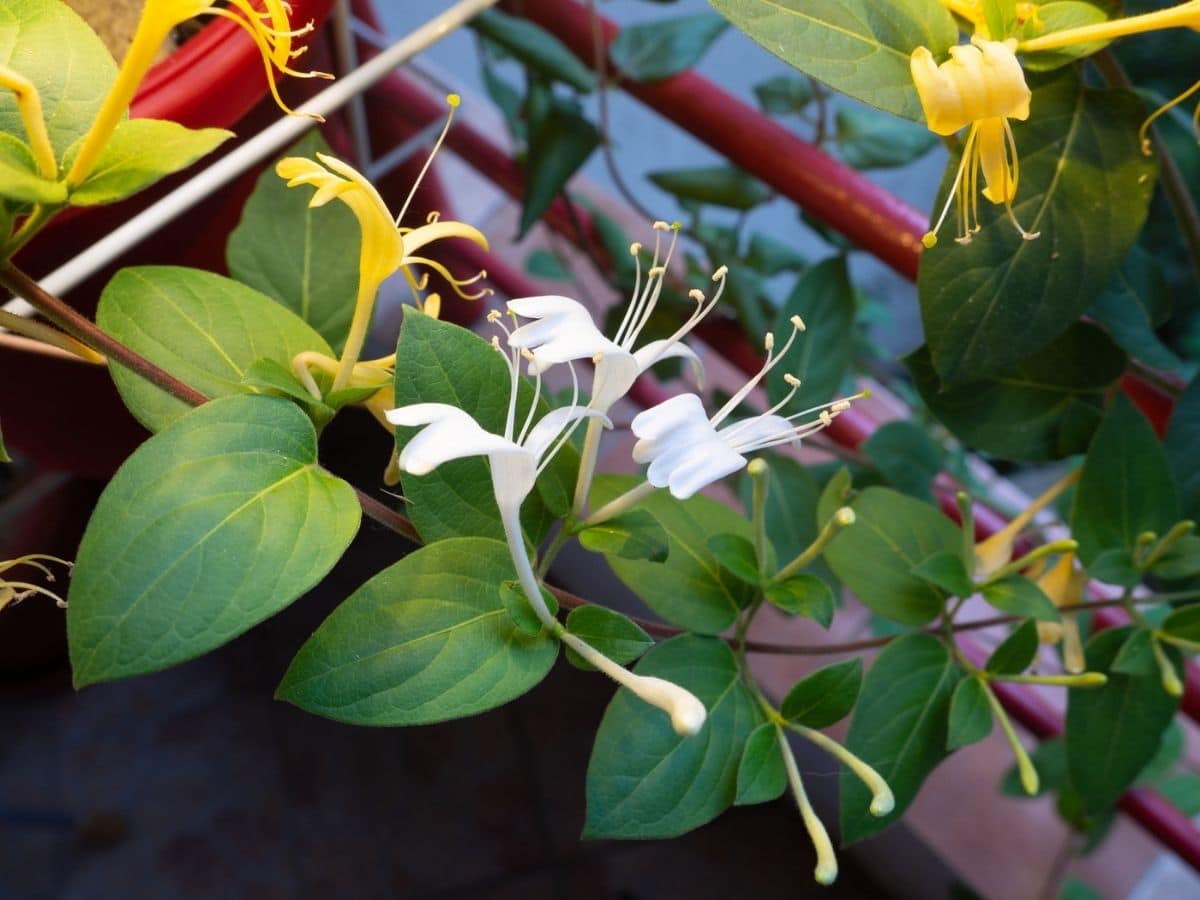Understanding Honeysuckle Vine Basics: Growth Habits and Requirements
Honeysuckle vine is a popular, flowering climber known for its fragrant blooms and versatility in garden design. To provide optimal care for honeysuckle vine, it’s essential to understand its growth habits and basic requirements. Honeysuckle vine is a deciduous or evergreen climber that thrives in a variety of conditions, making it an excellent choice for gardeners of all skill levels.
When learning how to care for honeysuckle vine, it’s crucial to recognize its growth patterns. Honeysuckle vine can grow up to 20 feet tall, with a spread of around 10 feet. It has a twining habit, using its stems to wrap around supports and climb upwards. This growth habit makes honeysuckle vine an ideal choice for trellises, arbors, and pergolas.
In terms of basic requirements, honeysuckle vine prefers well-draining soil and full sun to partial shade. It’s relatively drought-tolerant, but consistent moisture promotes healthy growth and flowering. Honeysuckle vine is also adaptable to a range of soil types, from acidic to alkaline, making it a versatile choice for gardeners with varying soil conditions.
By understanding the growth habits and basic requirements of honeysuckle vine, gardeners can provide the necessary care to promote healthy growth and flowering. This foundation of knowledge is essential for learning how to care for honeysuckle vine and ensuring its success in the garden.
Choosing the Right Location: Sunlight, Soil, and Support
When it comes to learning how to care for honeysuckle vine, selecting the right location is crucial for its success. Honeysuckle vine thrives in a variety of conditions, but it does have specific requirements for sunlight, soil, and support. By choosing the right location, gardeners can provide their honeysuckle vine with the best possible start in life.
In terms of sunlight, honeysuckle vine prefers full sun to partial shade. It can tolerate a range of light conditions, but it will produce more flowers and grow more vigorously in full sun. When selecting a location, choose a spot that receives at least six hours of direct sunlight per day.
Soil is also an essential factor to consider when choosing a location for honeysuckle vine. It prefers well-draining soil that is rich in organic matter. Honeysuckle vine can thrive in a range of soil types, from acidic to alkaline, but it will perform best in soil with a pH between 6.0 and 7.0.
Support is another critical factor to consider when selecting a location for honeysuckle vine. As a climbing plant, honeysuckle vine needs something to climb on. Choose a location with a sturdy trellis, arbor, or other support that can provide the necessary structure for the vine to grow.
By considering these factors and choosing the right location, gardeners can provide their honeysuckle vine with the best possible conditions for growth and flowering. This will help to ensure the long-term health and success of the plant, and provide a beautiful display of flowers for years to come.
Watering and Humidity: Finding the Perfect Balance
Watering is a crucial aspect of learning how to care for honeysuckle vine. Honeysuckle vine prefers moist soil, but it can be susceptible to overwatering. To avoid this, it’s essential to find the perfect balance between watering and humidity.
In terms of frequency, honeysuckle vine should be watered once or twice a week, depending on the climate and soil type. During hot and dry weather, it may need to be watered more frequently, while during cool and rainy weather, it may need to be watered less often.
The amount of water also plays a crucial role in the care of honeysuckle vine. The soil should be kept consistently moist, but not waterlogged. A good rule of thumb is to water the vine until the top 6-8 inches of soil feels moist to the touch.
Humidity is also an essential factor to consider when caring for honeysuckle vine. Honeysuckle vine prefers a humid environment, typically between 50-70% relative humidity. To maintain optimal humidity levels, gardeners can use a humidifier or group plants together to create a microclimate.
It’s also important to note that honeysuckle vine is sensitive to extreme temperatures and humidity fluctuations. Avoid placing the vine in areas with drafts or extreme temperature fluctuations, as this can cause stress to the plant.
By finding the perfect balance between watering and humidity, gardeners can provide their honeysuckle vine with the optimal conditions for growth and flowering. This will help to ensure the long-term health and success of the plant, and provide a beautiful display of flowers for years to come.
Fertilization and Pruning: Encouraging Healthy Growth
Fertilization is an essential aspect of learning how to care for honeysuckle vine. Honeysuckle vine is a heavy feeder and requires regular fertilization to promote healthy growth and flowering. A balanced fertilizer with a ratio of 10-10-10 (nitrogen-phosphorus-potassium) is ideal for honeysuckle vine.
The frequency of fertilization depends on the growth stage of the vine. During the growing season, fertilize honeysuckle vine once a month. During the dormant season, fertilize every 2-3 months. It’s also important to note that honeysuckle vine prefers a slightly acidic to neutral soil pH, so avoid using fertilizers that can alter the soil pH.
Pruning is another crucial aspect of honeysuckle vine care. Pruning helps to promote healthy growth, encourages flowering, and prevents overgrowth. Prune honeysuckle vine in the late winter or early spring, removing any dead or damaged stems. Cut back the stems to about 6-8 inches from the ground, and shape the vine to maintain a desired shape.
There are several pruning techniques that can be used to promote healthy growth and flowering in honeysuckle vine. One technique is to prune the vine to encourage a central leader, which helps to promote a strong and upright growth habit. Another technique is to prune the vine to encourage lateral growth, which helps to promote a fuller and more compact shape.
By fertilizing and pruning honeysuckle vine regularly, gardeners can encourage healthy growth and flowering. This will help to ensure the long-term health and success of the plant, and provide a beautiful display of flowers for years to come.
Pest and Disease Management: Common Issues and Solutions
When learning how to care for honeysuckle vine, it’s essential to be aware of common pests and diseases that can affect the plant. By identifying and addressing these issues early on, gardeners can prevent damage and ensure the long-term health of their honeysuckle vine.
Aphids are a common pest that can affect honeysuckle vine. These small, soft-bodied insects feed on the sap of the plant, causing curled or distorted leaves. To control aphids, use neem oil or insecticidal soap, and make sure to spray the undersides of the leaves where aphids tend to congregate.
Whiteflies are another common pest that can affect honeysuckle vine. These tiny, winged insects feed on the sap of the plant, causing yellowing or stunted growth. To control whiteflies, use yellow sticky traps or insecticidal soap, and make sure to spray the undersides of the leaves where whiteflies tend to congregate.
Powdery mildew is a common disease that can affect honeysuckle vine. This fungal disease causes a white, powdery coating to form on the leaves of the plant, leading to yellowing or stunted growth. To control powdery mildew, use a fungicide specifically designed for powdery mildew, and make sure to remove any infected leaves or stems.
Other common pests and diseases that can affect honeysuckle vine include spider mites, mealybugs, and root rot. To prevent these issues, make sure to provide good air circulation, water carefully, and fertilize regularly.
By being aware of common pests and diseases that can affect honeysuckle vine, gardeners can take steps to prevent and address these issues. This will help to ensure the long-term health and success of the plant, and provide a beautiful display of flowers for years to come.
Training and Trellising: Maximizing Vertical Space
Training and trellising honeysuckle vine is an essential aspect of learning how to care for honeysuckle vine. By providing support for the vine, gardeners can maximize vertical space and encourage the plant to grow upwards, rather than outwards.
There are several types of trellises and supports that can be used to train honeysuckle vine. Arbors, pergolas, and trellises are all popular options, and can be made from a variety of materials, including wood, metal, and plastic. When choosing a trellis or support, make sure it is sturdy enough to hold the weight of the vine, and is at least 6-8 feet tall to allow for maximum growth.
To train honeysuckle vine, start by gently twining the stems around the trellis or support. Use soft ties or clips to secure the stems in place, and make sure not to tie them too tightly, as this can damage the plant. As the vine grows, continue to twine the stems around the trellis or support, and prune any stray stems or leaves to maintain a neat and tidy appearance.
Training and trellising honeysuckle vine not only maximizes vertical space, but also encourages the plant to produce more flowers and foliage. By providing support for the vine, gardeners can create a stunning display of flowers and foliage that will attract pollinators and add beauty to the garden.
Some other tips to keep in mind when training and trellising honeysuckle vine include making sure the trellis or support is placed in a location that receives full sun to partial shade, and watering the vine regularly to promote healthy growth. By following these tips, gardeners can create a thriving and beautiful honeysuckle vine that will provide years of enjoyment.
Propagation and Division: Sharing Your Honeysuckle Vine
Propagation and division are essential techniques for sharing honeysuckle vine with friends and family. By learning how to propagate and divide honeysuckle vine, gardeners can create new plants and share their love of gardening with others.
Stem cuttings are a popular method for propagating honeysuckle vine. To take stem cuttings, cut 6-8 inch sections of stem from the current season’s growth. Remove lower leaves and dip the cut end in rooting hormone. Plant the cutting in a pot filled with a well-draining mix and keep the soil moist. Roots should develop within 1-2 weeks.
Layering is another method for propagating honeysuckle vine. To layer, bend a long stem down to the ground and secure it with a rock or U-shaped wire. Cover the buried portion of the stem with soil and keep it moist. Roots should develop within 1-2 weeks. Once roots have developed, cut the stem below the soil line and plant the new rooted section in a pot.
Division is a method for propagating honeysuckle vine that involves dividing the roots of a mature plant. To divide, dig up the entire plant and gently separate the roots. Replant the separated sections in a new location and water well.
When sharing honeysuckle vine with friends and family, make sure to provide them with the necessary care instructions. This will help ensure the new plant thrives and provides years of enjoyment.
By learning how to propagate and divide honeysuckle vine, gardeners can share their love of gardening with others and create new plants to enjoy. This is a great way to spread the joy of gardening and create a sense of community among gardeners.
Common Mistakes to Avoid: Troubleshooting Honeysuckle Vine Care
When learning how to care for honeysuckle vine, it’s essential to be aware of common mistakes to avoid. By understanding these mistakes, gardeners can take steps to prevent them and ensure the long-term health and success of their honeysuckle vine.
One common mistake to avoid is overwatering. Honeysuckle vine prefers well-draining soil and can be susceptible to root rot if the soil is too wet. To avoid overwatering, make sure to check the soil moisture regularly and only water when necessary.
Another common mistake to avoid is underwatering. Honeysuckle vine needs consistent moisture to thrive, especially during the growing season. To avoid underwatering, make sure to water the vine regularly and provide supplemental irrigation during periods of drought.
Inadequate pruning is another common mistake to avoid. Pruning is essential for promoting healthy growth and preventing overgrowth in honeysuckle vine. To avoid inadequate pruning, make sure to prune the vine regularly, removing any dead or damaged stems and shaping the plant to maintain a desired shape.
Other common mistakes to avoid when caring for honeysuckle vine include providing inadequate support, failing to fertilize regularly, and neglecting to monitor for pests and diseases. By being aware of these mistakes and taking steps to prevent them, gardeners can ensure the long-term health and success of their honeysuckle vine.
By following these troubleshooting tips, gardeners can address common issues and ensure the long-term health and success of their honeysuckle vine. This will help to create a thriving and beautiful plant that will provide years of enjoyment.









